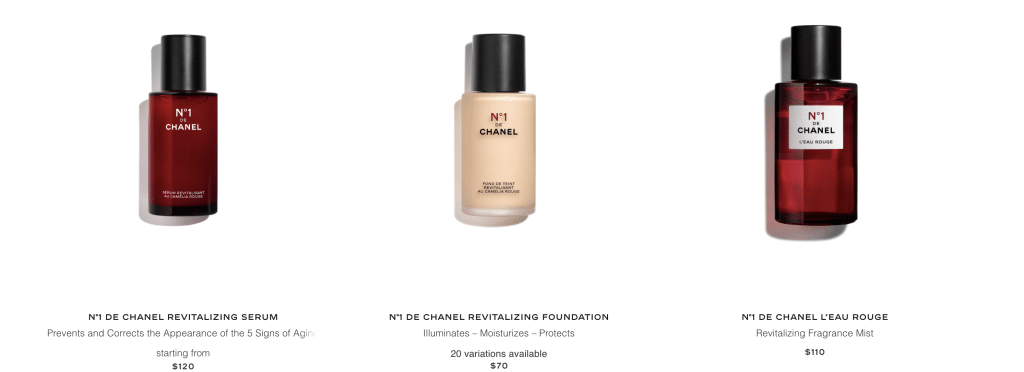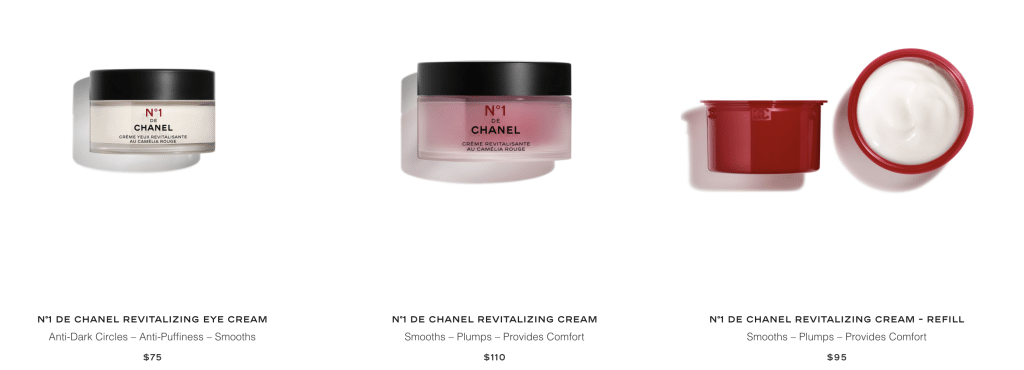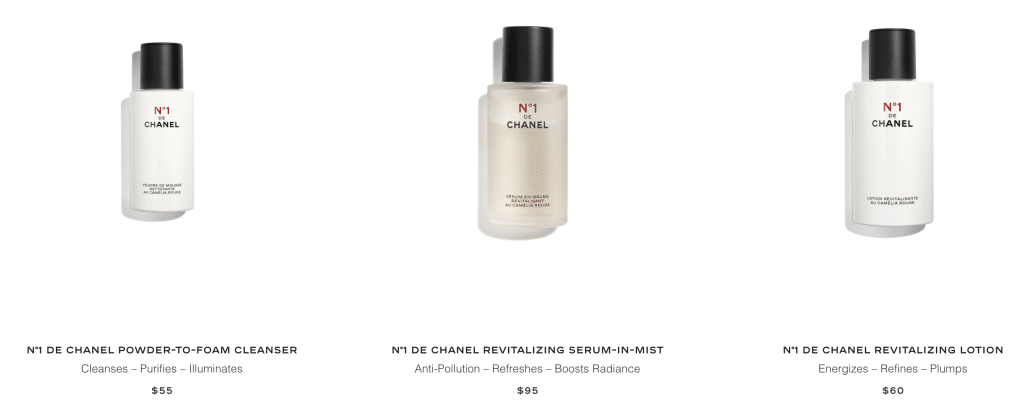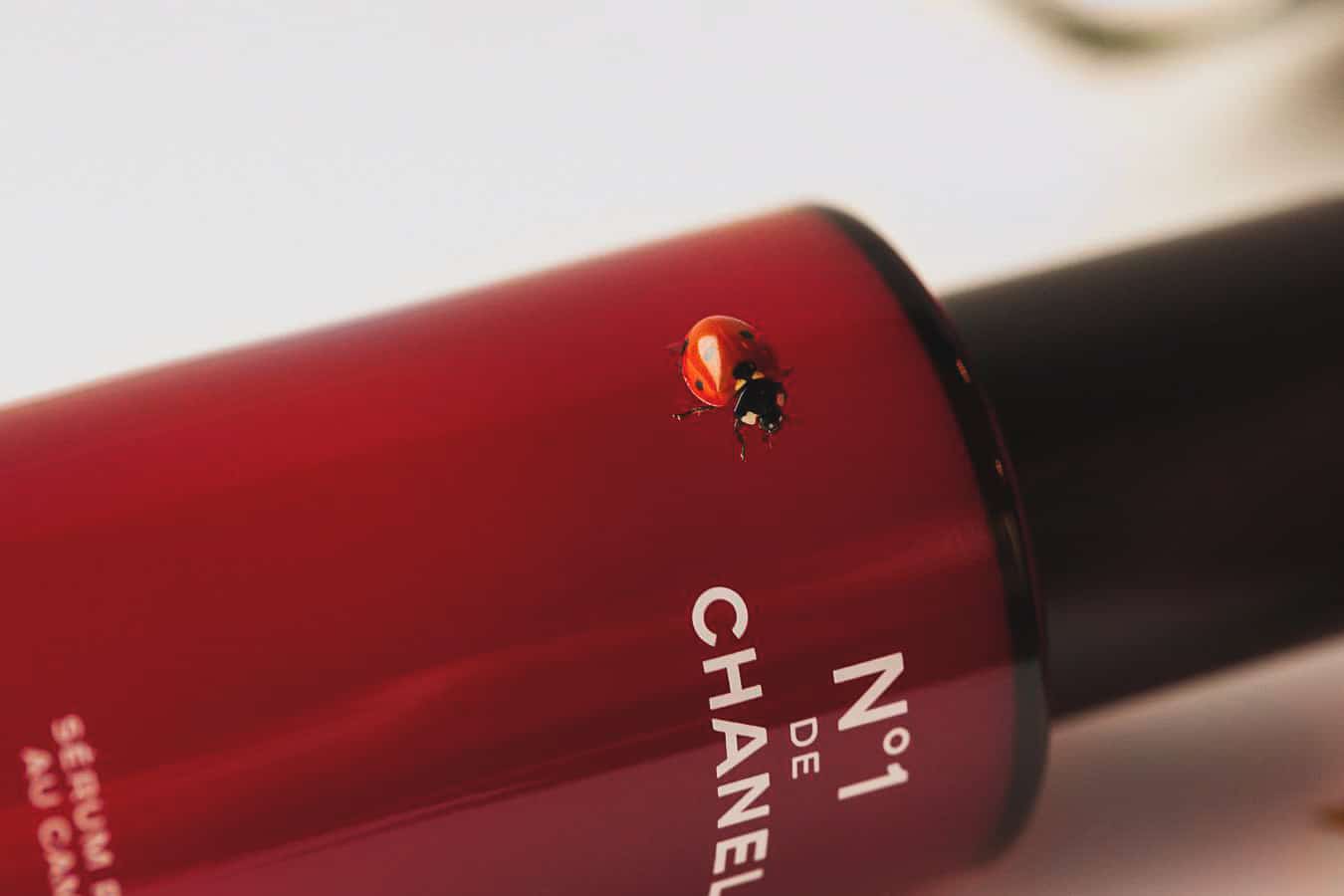French luxury label Chanel has launched its first sustainable beauty collection, No. 1 de Chanel, in its ongoing efforts to decrease its environmental impact.
Chanel is turning its attention to sustainability in 2022, with its first eco-beauty collection. The new products combine environmental responsibility with a holistic approach to beauty. The range marks the brand’s cleanest skincare and makeup range to date.
No. 1 de Chanel is targeted to the top five skincare concerns for women, from fine lines and wrinkles to sagging skin. The popular fashion and beauty label says it is bringing innovations to skincare with a new discovery from the Camellia flower, which it says boasts potent skin benefits.
No. 1 de Chanel’s star: the Camellia flower
The range was years in the making, according to Chanel, which worked with the red Camellia flower in its Open Sky laboratory in the south of France, for a decade. It says the ingredient prevents skin cells from becoming sluggish. The formulas contain up to 76 percent of the Camellia extract. Ninety-seven percent of ingredients are bio-based.
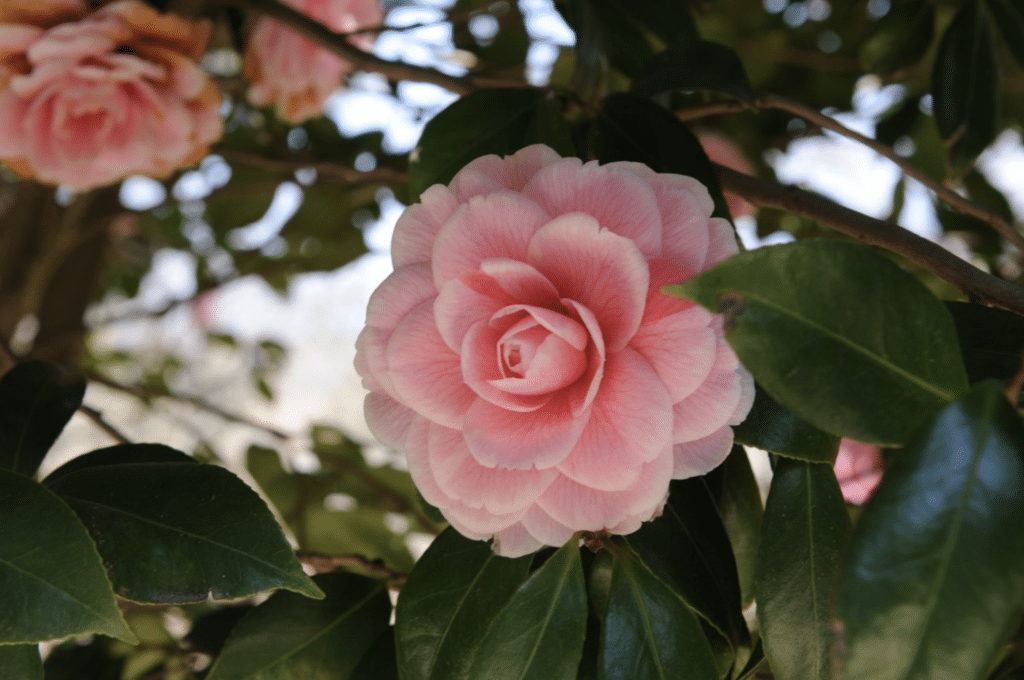
The full No. 1 de Chanel lineup includes a powder-to-foam cleanser, eye cream, serum, fragrance mist, foundation, and lotion.
But it’s the brand’s sustainability commitments with No. 1 de Chanel that may be its biggest achievement. Chanel says it reduced bottle weights by 30 percent, which will reduce the carbon footprint from shipping. It has replaced solid plastic lids with an innovation that reduces plastic use and fills the rest of the lid with crushed Camellia seeds. Eighty percent of the packaging is now glass instead of plastic. The jars and bottles are refillable. Chanel says it has also reduced paper use in its leaflets, and switched to organic ink.
French beauty goes sustainable
Chanel, the original French beauty brand, has been slow to embrace the growing clean beauty trend, now popular across France.
Mainstream competitors have also embraced the trend, namely L’Oréal and its subsidiary, Lancôme.
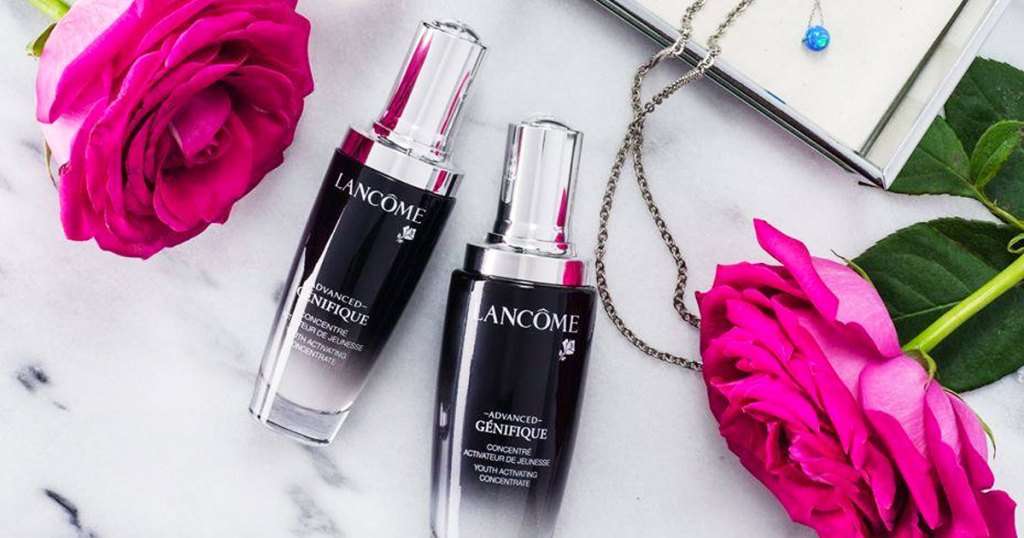
Last year, fellow French beauty brand Lancôme launched “Bring the World to Bloom,” a campaign focused on protecting biodiversity, namely through innovative agricultural efforts, eco-conscious formulations, and packaging, as well as implementing greener tech and biotechnology in product development. This mirrors efforts by its parent company L’Oréal, which include green science as a means to phase out petrochemical products historically difficult to replace.
“We are researching new extraction methods with green chemistry to create high-performing ingredients,” Francoise Lehmann, Lancôme CEO said to WWD last year. “Thanks to biotechnology, we create nature-derived ingredients, which contribute to limiting the use of raw vegetal materials.”
Lancôme’s sustainability goals
Already, 99 percent of the roses used in Lancôme makeup and skincare products are organic; the company says it will hit 100 percent by 2025. By 2030, all raw materials will be recycled or sustainable, the company says. At least 70 percent of the brand’s ingredients will be from renewable sources by 2025; 100 percent of its major raw materials will be sourced both sustainably and socially responsibly by 2030.
“What inspired us a lot for this worldwide operation was the acquisition of the domain in Grasse,” Lehmann said. The Grasse location grows Centifolia roses and other plants in the South of France for Lancôme products. It purchased the estate last year.
“The more we dig into this domain, the more we find great things and inspiration for other initiatives,” she said. “It has all that we have in mind in terms of best practices.”
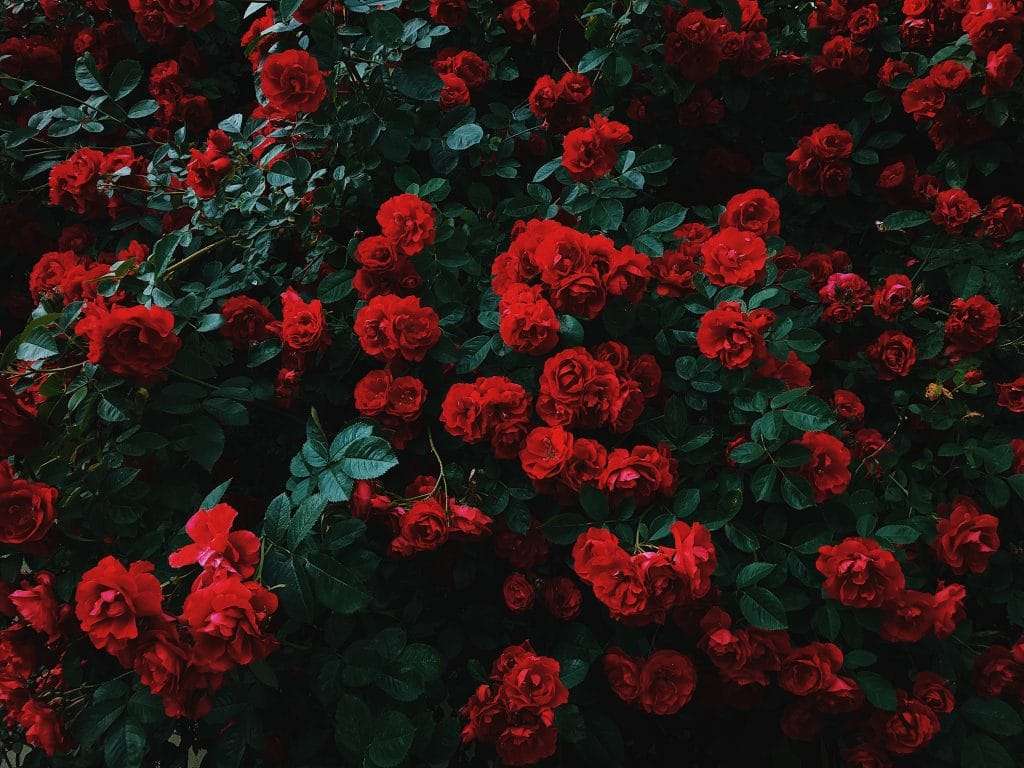
The company is also taking a unique approach to protecting plant species in the formation of a three-year partnership with France’s National Museum of History. It will work to help protect 24 endangered plant species. It will collect seeds of endangered plants, send the seeds to seed banks, and work with experimental gardens.
“The Live Responsibly” initiative will focus on orienting people to more sustainable habits at the consumer level. This includes more options for refillable, rechargeable, and recyclable opportunities.
“Next year, we are going to extend this recharge/refill program with the launch of refillable fragrances, and other big pillars in Lancôme’s range will also be refillable,” said Lehmann.
By 2023, half of Lancôme’s products will be refillable or recyclable. In China, it’s already recycled more than two million units.
L’Oréal’s sustainable beauty
For L’Oréal, it’s moving toward sustainable ingredients across 95 percent of its formulations over the next decade. It’s looking at biotechnology such as gene-editing complex ingredients to address some of the more difficult ingredient needs. Its use of green tech also helps to reduce waste products in the production cycle.
L’Oréal is also prioritizing consumer education around its products with a new website, Inside Our Products. There, the brand provides information on nearly 1,000 of its products.
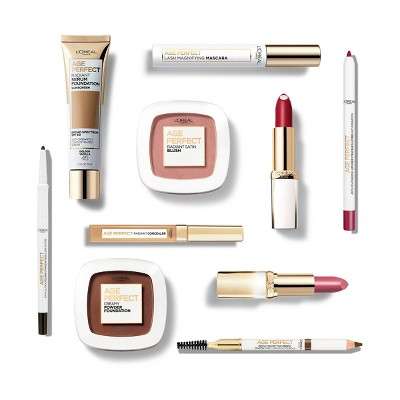
The company has also created a consumer-facing ranking system that scores the brand’s products on 14 sustainability criteria that are independently verified. The ratings, which will appear on all rinse-off products by 2022, rank them from “A” to “E” grades, including greenhouse gas emissions, water scarcity, ocean acidification, and impact on biodiversity.
“Both ‘A’ and ‘E’ grades are fixed to account for 10 percent of products with the lowest and highest footprints, respectively, while ‘B’, ‘C’ and ‘D’ scores are fixed in terms of product impact values,” Vogue Business explains.” L’Oréal will implement an action plan to redesign products ranked ‘D’ or ‘E’, and consumers viewing those products online will be redirected to higher-scoring alternatives.”
Chanel tackles the physical tolls of climate change
For Chanel, Camellia isn’t just a skincare innovation, it’s also a way to help address the toll climate change and environmental stressors have on the skin.
The new No. 1 de Chanel Revitalizing Serum-In-Mist, for example, has a bi-phase formula and can be misted on the face throughout the day. The company says it “effectively helps protect the skin from pollution and thereby preserves its youthful appearance”.
Chanel says the aim of the new range is to also evoke positive emotions through the focus on holistic beauty—a shift occurring across the beauty sector. “Easy” and slow beauty top the 2022 clean beauty trends as women, men, and nonbinary people aim to minimize their dependence on makeup and skincare ingredients, a side effect of the pandemic and the emerging slowcore approach to fashion and beauty.
Shop the collection below.
